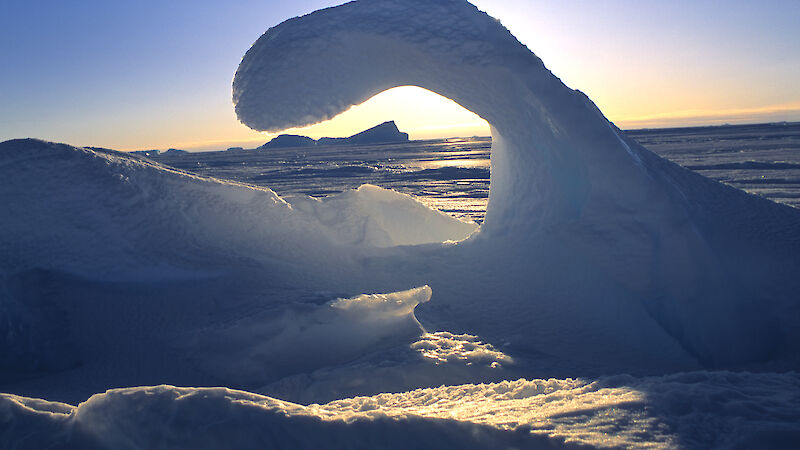It is just over 10 years since the Antarctic Treaty parties signed the Protocol on Environmental Protection to the Antarctic Treaty in Madrid. At the time it was heralded as historic — a remarkable about-turn in thinking to establish comprehensive, legally binding measures to protect the Antarctic environment. Every new activity in Antarctica became subject to prior impact assessment. Strict rules were put in place to look after plants and wildlife. Australia undertook to better manage its wastes and to protect the sea from pollution.
The political significance of the change was encapsulated in Article 7 which prohibited mining. No-one was looking to exploit Antarctic minerals at the time, but this was a statement about attitudes to the Antarctic, that mining would not be part of its future. Thus was resolved a critical, long-standing Antarctic resource issue.
The Protocol was also a sign of a shift from a resource view of Antarctica to an environmental view. Antarctica got a new label — a natural reserve devoted to peace and science — a symbolic and effective link between key principles of the Treaty and the new direction for the continent. Globally, the Protocol was a landmark agreement — the first to cover an entire continent. On the ground in Antarctica it has had a remarkable effect. It remains an inspiration to those planning Antarctic activities.
The new environmental emphasis radically increased the amount of new Treaty business, leading to a doubling of the frequency of meetings and enlarged agendas, thanks largely to the new Committee for Environmental Protection (established 1998). There is also a higher degree of external accountability for actions in Antarctica and adherence to decisions made in the meetings. Environment related measures are still being developed under the framework of the Protocol, a demonstration that Parties remain committed to its environmental principles.
The Protocol didn’t just prohibit mining. In designating the Antarctic as a natural reserve, it established environmental principles governing the conduct of all activities, subjected all activities to prior environmental impact assessment and then to regular and effective monitoring, provided for the Committee for Environmental Protection, required national programs to develop contingency plans for environmental emergencies, and provided for rules governing liability for environmental damage.
Under the Protocol, the intrinsic value of the Antarctic and the protection of its environment and ecosystems must be fundamental considerations in planning and conducting all activities in Antarctica. All such activities must limit adverse impacts on the Antarctic environment. They must avoid adverse effects on climate, air or water quality, or on the distribution or abundance of wildlife; they must not jeopardise endangered or threatened species; and they must avoid substantial risk to areas of biological, scientific, historic, aesthetic or wilderness significance. And they must give priority to preserving the value of Antarctica for scientific research.
The Protocol’s Annexes detail specific measures. Annex I deals with one of the Protocol’s most important requirements — for prior impact assessment of all new or significantly changed activities. People planning work in Antarctica must now think about how it can be done in the most environmentally friendly manner. For major activities, a Comprehensive Environmental Evaluation must be prepared and opportunity provided for the Committee for Environmental Protection and Consultative Parties to comment on the proposal.
Annex II provides measures for the conservation of Antarctic flora and fauna, including measures to deal with non-indigenous organisms.
Measures for managing and disposing of waste are provided for in Annex III, which prescribes disposal practices for each type of waste generated in Antarctica. It requires people to think about how they are going to minimise and store waste, along with development and circulation of waste management plans for all stations, field sites and ships. It specifies the wastes that must be removed from Antarctica, such as radioactive material and electrical batteries, and requires the cleanup of past waste disposal sites and abandoned facilities, where removal does not increase the impact.
An important aspect of Annex IV on preventing marine pollution is the need for marine pollution contingency plans for each ship and station. The Annex regulates discharge of substances from ships, including oily mixtures, garbage and ship-generated sewage. Disposal at sea of any plastics is prohibited. The Annex’s prescriptions are broadly consistent with related provisions under the International Convention for the Prevention of Pollution from Ships (MARPOL).
Annex V on area protection and management establishes a scheme for protecting and managing sites of special value. Previous categories of protected areas are integrated into Antarctic Specially Protected Areas (entry to which requires a permit) and Antarctic Specially Managed Areas. Management plans apply to both categories. The protected area system also provides for the designation of historic sites and monuments, which must not be damaged or removed.
The Protocol has been the stimulus for a highly-productive CEP. It continues to form a large component of the agenda for Antarctic Treaty Consultative Meetings, and has become a fundamental component of Treaty inspections of national activities. Most importantly, it has ensured that when they make decisions about their activities, national programs put protection of the Antarctic environment at the top of their priority list.
Gill Slocum
Antarctic Treaty and Government,
Australian Antarctic Division

